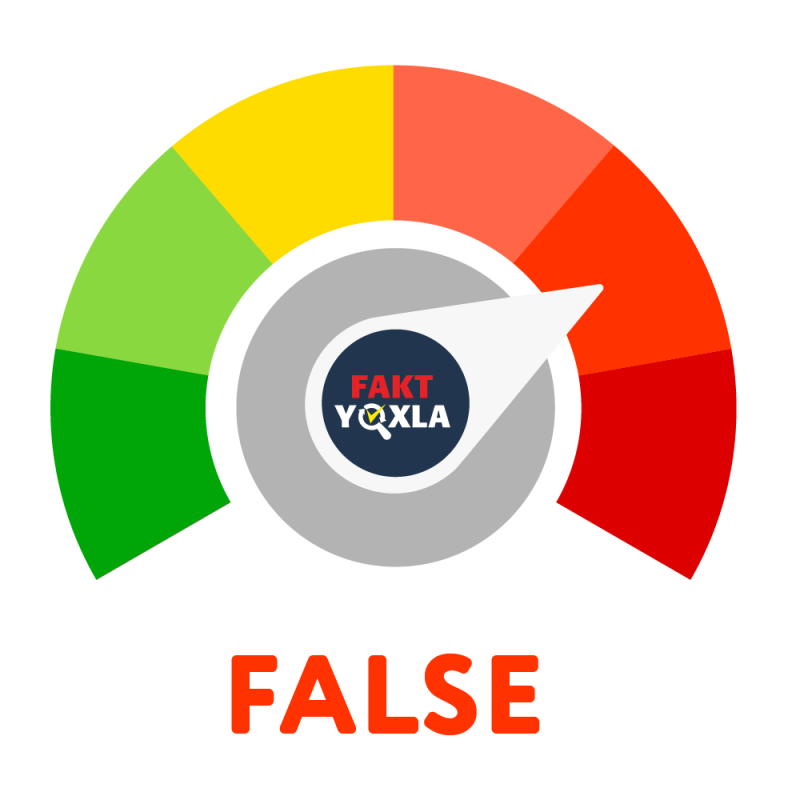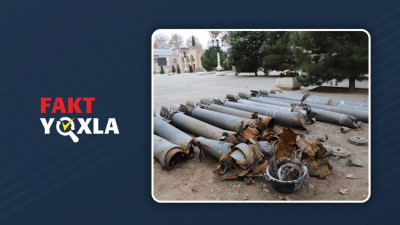"For the first time, great leader Heydar Aliyev gave a political and legal assessment to the genocides committed by Armenians."
Kamila Aliyeva, deputy of Milli Majlis from YAP, said this.
Fakt Yoxla examined whether this claim was true.
Giving a legal assessment to any event means that it is reflected in legislative norms, and political assessment means that it is reflected in speeches and statements at the state and international levels.
By saying "genocides committed by Armenians", the deputy referred to the mass killings in different regions of Azerbaijan in 1905-1907, 1918-1920, as well as in Khojaly in 1992, relocations and deportations in 1948-1953 and 1988.
Decrees signed by Heydar Aliyev
With the decree signed by Heydar Aliyev on March 26, 1998, March 31 was declared the Day of Genocide of Azerbaijanis.
The decree states that after the Treaties of Gulustan and Turkmenchay signed in 1813 and 1828, the basis of the process of dividing the historical lands of Azerbaijan has been laid, and after the administrative-territorial unit "Armenian Province" was created, the basis of the process of expelling Azerbaijanis from their lands was laid.
"The atrocities of the Armenians, which started from Baku, covered the whole of Azerbaijan and the Azerbaijani villages in the territory of present-day Armenia. "Hundreds of settlements were destroyed and razed to the ground, and thousands of Azerbaijanis were brutally murdered," the decree states about the events of 1905-1907.
The fact that civilians were massacred and villages were burned down in Baku, Shamakhi, Guba districts, Karabakh, Zangazur, Nakhchivan, Lankaran, and other regions of Azerbaijan after the October revolution in Russia in 1917 is also mentioned in this document.
The decree also mentions the deportations of 150,000 people carried out at the state level in the late 1940s and early 1950s.
The decision of the Soviet of Ministers of the USSR on December 23, 1947, alone envisaged the transfer of 100,000 collective farmers and the Azerbaijani population from the Armenian SSR to the Kur-Araz plain of the Azerbaijan SSR.
In 1997, with the decree signed by Heydar Aliyev, the State Commission was established for the purpose of comprehensively investigating the mass deportation of Azerbaijanis from their historical and ethnic lands in the territory of the Armenian SSR in 1948-1953. It should be noted that in 1950, when the relocation was carried out, Heydar Aliyev was appointed head of the department of the State Security Committee of the Azerbaijan SSR.
The commission, created by the Azerbaijan Democratic Republic
The Azerbaijan Democratic Republic has taken a number of legal and political steps in the direction of investigating the massacres committed against Azerbaijanis during the period of independence, which is less than two years. As early as July 15, 1918, at the meeting of the government of the Azerbaijan Democratic Republic in Ganja, an Extraordinary Investigation Commission was established.
In the reports sent to the Ministry of Justice of the Azerbaijan Democratic Republic on November 22, 1918, the chairman of the commission, Alakbar Bey Khasmammadov, provided detailed information about the initial state of the investigation of the violence committed against Azerbaijanis in Baku governorate, Kurdamir, Karabujag, Arab Mehdibey, and other villages of Goychay district, Shamakhi city and Muslim villages of Shamakhi district, as well as in Baku city.
On January 6, 1919, Khasmammadov sent the information proving the massacres committed in Baku, Guba, and Shamakhi cities, as well as in Shamakhi, Goychay, Javad, and Guba districts, together with a letter to the Minister of Foreign Affairs to present to the delegation going to the Paris Peace Conference.
The commission prepared six volumes of preliminary investigation materials and 95 photographs as evidence. A total of 36 volumes and 3,500 sheets of materials were prepared for the initiation of criminal cases against the organizers and participants of the massacres. 128 reports and draft decisions were prepared.
Furthermore, March 31 was marked as a National Day of Mourning in 1919 and 1920.
In the decree signed by Heydar Aliyev 80 years after these events, the declaration of March 31 as a National Day of Mourning during the Azerbaijan Democratic Republic was called the first attempt in history to give a political assessment to mass massacres against Azerbaijanis.
In the Encyclopedia of the Azerbaijan Democratic Republic published on the basis of Ilham Aliyev's order, it was also mentioned that the ADR government laid the foundation for the legal assessment of genocides against Azerbaijanis by creating an Extraordinary Investigation Commission.
It should be noted that the materials collected by this commission were not only stored in local archives.
In Sections 5, 6, and 7 of the document entitled "Memorandum of the Republic of Caucasus Azerbaijan to the Paris Peace Conference", prepared by the Azerbaijani delegation led by Alimardan Bey Topchubashov, who participated in the Paris Peace Conference organized after the First World War, the crimes committed by Bolshevik and Armenian-Dashnak forces against Azerbaijanis in Baku, Shamakhi, Guba, and other regions were discussed. This document was submitted to the secretariat of the Paris Peace Conference in English and French manuscripts and was also distributed to other participants of the conference.
Decisions signed by the chairmen of the Supreme Soviet, Elmira Gafarova, Yagub Mahmudov, and Isa Gambar
The events of 1988 were also mentioned in the decision signed by the Supreme Soviet of the Republic of Azerbaijan on May 5, 1991.
"During 1988-1989, two hundred thousand Azerbaijanis were brutally evicted from the territory they had lived in for centuries. When Azerbaijanis were expelled en masse, many of them were killed and several refugees died of cold in the mountains during the winter. Now, there is not a single Azerbaijani left in Armenia," said the document signed by the chairman of the Supreme Soviet, Elmira Gafarova.
On March 25, 1992, in order to clarify the details of the genocide in Nagorno-Karabakh, including in Khojaly, by the decision of the Supreme Soviet of Azerbaijan, a Deputy Investigative Commission consisting of fifteen members was established. It should be noted that this decision was signed by Yagub Mammadov, the chairman of the Supreme Soviet.
On February 17, 1993, the Milli Majlis passed a decision on the conclusion of the Deputy Investigative Commission. In that decision, the events committed in Khojaly were confirmed as genocide.
The commissions of the Milli Majlis on human rights and international relations and foreign affairs have been entrusted with the delivery of information about the Khojaly genocide to the world community through the United Nations and other international organizations.
The government of Azerbaijan was instructed to establish a memorial monument to perpetuate the memory of those who died in the Khojaly genocide, to prepare and implement a program of measures to regularly study and comprehensively meet the financial and moral needs of the internally displaced persons who left their permanent residences and lost their family heads due to the Khojaly genocide. This decision was signed by Isa Gambar, who was the chairman of the Supreme Soviet at that time.
Thus, a political and legal assessment of the massacres, relocations, and deportations that took place in 1905-1907 and 1948-1953 was given by Heydar Aliyev, the massacres that took place in 1918-1920 by the government of the Azerbaijan Democratic Republic, the relocations and deportations that took place in 1988 by Elmira Gafarova, when she was the chairman of the Supreme Soviet, and the Khojaly massacre that took place in 1992 by Yagub Mahmudov and Isa Gambar, when they were the chairman of the Supreme Soviet.
Fakt Yoxla concludes that Kamila Aliyeva's claim is a Manipulation of Facts.











